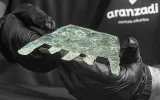- Marine biologist Taryn Foster, from the Abrolhos Islands off the coast of Western Australia, is developing a new method to regenerate coral reefs.
- This method involves placing coral pieces on a special base, and the process is accelerated by using artificial intelligence-supported collaborative robots.
- Coral restoration studies aim to protect coral reefs that are threatened by climate change, and advances in this field are yielding promising results.
“This area is a truly special part of the world,” said marine biologist Taryn Foster of the Abrolhos Islands off the coast of Western Australia. “Although there are no palm trees or luscious vegetation here, it is possible to see all these tropical coral and fish species underwater.” said.
Corals are one of the animals called polyps, which generally live in tropical waters and form a hard outer shell by extracting calcium carbonate from the sea. These hard shells accumulated over time to form today’s reefs.
Although coral reefs cover only 0.2% of the seafloor, they provide habitat for more than a quarter of marine creatures. However, these creatures have become vulnerable to diseases and deaths in recent years because they are sensitive to factors such as warming and acidification.
Damaged corals turn white through a process known as bleaching, which Foster witnessed firsthand. According to the Global Coral Reef Monitoring Network, a 1.5 degree increase in water temperature could lead to losses of 70% to 90% of the world’s reefs. Some scientists think that the reefs will disappear completely by 2070.
Coral restoration efforts involve transplanting small corals, often grown in nurseries, to damaged reefs. However, this work can be slow and costly. Additionally, only some of the reefs at risk receive assistance.
Taryn Foster is working on a system that can more quickly regenerate reefs in the shallow waters of the Abrolhos Islands. This system involves placing pieces of coral on a special base. These designed bases are then placed on the sea floor in groups.

Foster, who designed the base, which is shaped like a flat disc with grooves and handles and made of a limestone-type concrete, said: “We wanted it to be something we could mass produce at a reasonable price. However, it had to be easily deployed by a diver or a remote-controlled vehicle.” he explains.
The results obtained so far are quite promising. “We placed different prototypes of our coral skeletons and tested them on four different species,” Foster said. “They have all been very successful in terms of growth,” he said.

Hoping to accelerate this technology, Foster has formed a partnership with San Francisco-based engineering software firm Autodesk. Researchers are training an artificial intelligence to control collaborative robots (cobots).
Robotic arms can graft or adhere coral fragments to seed plugs. Other robots place them on the seafloor and use vision systems to decide how to anchor them.

“Each piece of coral is different, even within the same species, so robots need to recognize and handle this variability,” said Nic Carey, senior principal research scientist at Autodesk. “So far they’ve been pretty good at handling the variability in coral shapes.” said.
Compiled by: Ayça Ayaz






